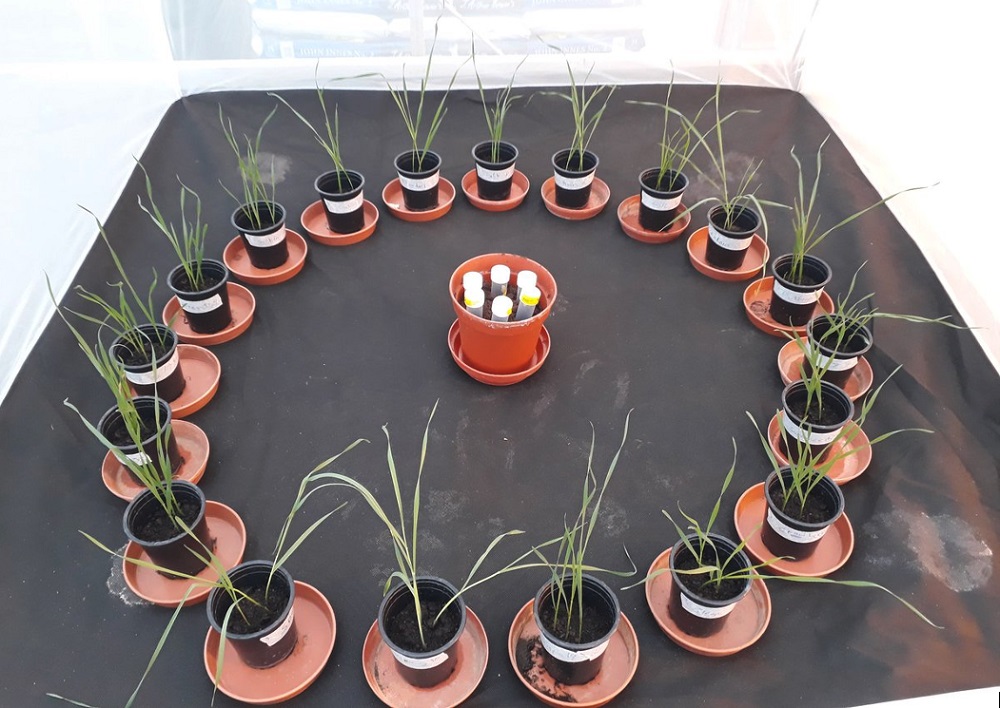Fatal attraction: the wheat chemicals aphids can’t resist
Monday, 12 July 2021
With pesticide options for aphid control waning, an AHDB PhD studentship aims to turn the tables on these damaging pests. Sue Cowgill, who manages pest research at AHDB, investigates how the work exploits the power of natural chemicals released by old wheat varieties.
Virus management in cereals and oilseed rape
Integrated pest management (IPM) home
Various aphid species, particularly the bird cherry-oat aphid and grain aphid, transmit yield-robbing Barley yellow dwarf virus (BYDV) to cereals. The recent loss of neonicotinoid insecticide seed treatments combined with moderate levels of pyrethroid insecticide resistance in UK grain aphid populations mean integrated pest management (IPM) is now essential for these pests.
Based at Harper Adams University, the PhD student – Maria Elisa Leandro – has completed the first year of her project. The work delves into the mysterious world of how aphids locate crops. Although partly due to visual cues, aphids also respond to olfactory stimuli – in essence, they can ‘smell’ certain crops. In fact, it has been known for a long time that aphids prefer to land on some wheat varieties over others.
Almost 50 years ago (1972), the winter wheat variety Maris Huntsman hit the market. It boasted a 20% yield advantage over the previous market leader. It soon became widely grown in the 70s and 80s. However, yield wasn’t the only attraction. The Huntsman was hunted – this, now heritage, variety caught the attention of passing aphids. The variety releases specific semiochemicals – ‘semio’ derives from the Greek word for ‘signal’ – irresistible to some aphid species. The variety and, to various degrees, other varieties grown at the same time helped contribute to the severe aphid outbreaks. Maria will investigate such signals and how to use them to trick the pest.
In the first year, grain aphid landing preferences have been determined on ancient (e.g. Einkorn), heritage (e.g. Maris Huntsman) and modern wheat varieties (including the BYDV-tolerant wheat, RAGT Wolverine). The tests (see main image) use varieties grown in pots arranged in a circle within a cage. Aphids are then released from the centre of the circle and their spread studied.
The preliminary findings show clear preferences among the aphids, with adults and nymphs found in greater numbers (after seven days) on the ancient and heritage varieties. The modern wheat varieties tested were far less attractive. However, observations suggest that once located by an aphid, the variety has little impact on aphid performance. Similar experiments in 2021 also include bird cherry-oat aphid.
An improved understanding of these chemicals opens up the potential to use them against aphids. For example, aphid-attractive trap crop strips could encourage the pests away from cash crops. These molecules could also be used in aphid traps, powering the next generation of monitoring solutions.
Improving integrated pest management (IPM) of aphid BYDV vectors (project information)
 Harper Adams University
Harper Adams University

